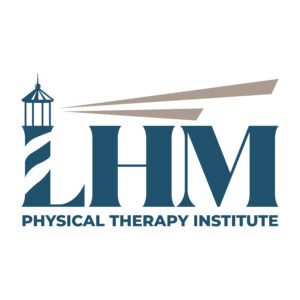Swing Safely into Spring Sports
By: Matt McKim, PT, DPT, Dillsburg Clinic Coordinator
Spring is in the air, and for many young athletes that means baseball and softball season! Participating in Little League offers numerous benefits including physical activity, teamwork, and skill development. However, like any sport, there are risks of injuries. Let us help ensure your young sluggers enjoy a fun and healthy season!
Here are some common injury risks associated with Little League baseball and softball, and steps to help young athletes get through the season healthy.
- Sprains and Strains: These are among the most common injuries in baseball or softball. Sprains involve the stretching or tearing of ligaments, while strains involve the stretching or tearing of muscles or tendons. Players may experience sprains or strains in various parts of the body, such as the shoulder, elbow, knee or ankle due to sudden movements or overexertion.
- Fractures: Fractures, or broken bones, can occur because of impact, falls, or collisions with other players or objects (like a bat or ball). Common fracture sites in baseball or softball include the wrist, hand, fingers, and elbow.
- Overuse Injuries: Little League players, especially pitchers, are susceptible to overuse injuries due to repetitive motions. These injuries can affect the shoulder, elbow, or other parts of the body and may include conditions like tendonitis or stress fractures. Make sure to watch for signs of exhaustion or overuse:
- Typical signs of overuse are decreased velocity, decreased control, increased soreness or tenderness, decreased endurance during a game or practice, increased time to recover following a game or practice, decreased shoulder ROM, or change in mechanics.
- Contusions: Also known as bruises, contusions occur when small blood vessels under the skin are damaged due to impact. Players may get contusions from being hit by a pitch, colliding with other players, or falling.
Tips to Help Young Athletes Stay Healthy
Stretching & Flexibility:
- Arm Circles: Stand with arms extended sideways and make circular motions with your arms, gradually increasing the size of the circles.
- Leg Swings: Stand next to a wall and swing one leg back and forth, then switch to the other leg. This helps to loosen up the hip flexors and hamstrings.
- Torso Twists: Stand with feet shoulder-width apart and twist your torso from side to side, allowing your arms to swing freely.
- Doorway stretch: Begin standing in an upright position in a doorframe. Bend your right elbow and place your forearm on the doorframe at shoulder height. With control, gently lean your trunk forward until you feel a comfortable stretch in your shoulder. Hold for the prescribed amount of time.
- Sleeper stretch: Begin lying on your right side, with your elbow bent at shoulder height. Keeping your elbow bent, gently grasp your wrist, and rotate your forearm toward the floor until you feel a stretch in your shoulder. Hold for the prescribed amount of time.
Upper Body Exercises:
- Shoulder Rotations: Use resistance bands or light dumbbells to perform shoulder rotations, both internally and externally, to strengthen the rotator cuff muscles.
- Shoulder blade rows: use a resistance band anchored around an object. With control, pull the band toward you, bending your elbows to bring your arms to your side. Pause briefly and return to the starting position.
- Wrist curls: Begin sitting, holding a dumbbell in your hand. Rest your forearm on a table, with your hand hanging over the edge, and your palm facing down. With control, bend your wrist to lift the dumbbell up toward the ceiling. Pause briefly, then, slowly lower your hand toward the floor to repeat the movement. Repeat steps above with your palm facing the ceiling.
- Push-Ups: For strengthening the chest, shoulders, and arms, which are important for throwing and batting.
Lower Body Exercises:
- Squats: Perform bodyweight squats or add resistance with dumbbells or a barbell to strengthen the quadriceps, hamstrings, and glutes, crucial for explosive movements.
- Lunges: Forward, backward, and lateral lunges help to improve lower body strength, balance, and flexibility.
- Calf Raises: Strengthen the calf muscles, important for running and maintaining balance.
At LHM Physical Therapy Institute, we want to help your athletes stay healthy and reach their full potential. Let us be a part of your team.
Find a clinic near you to learn more about how we can help your athlete stay healthy and reach their full potential. And if your child does get injured, we can provide a comprehensive evaluation and develop a plan to get them safely rehabbed and back on the field.






